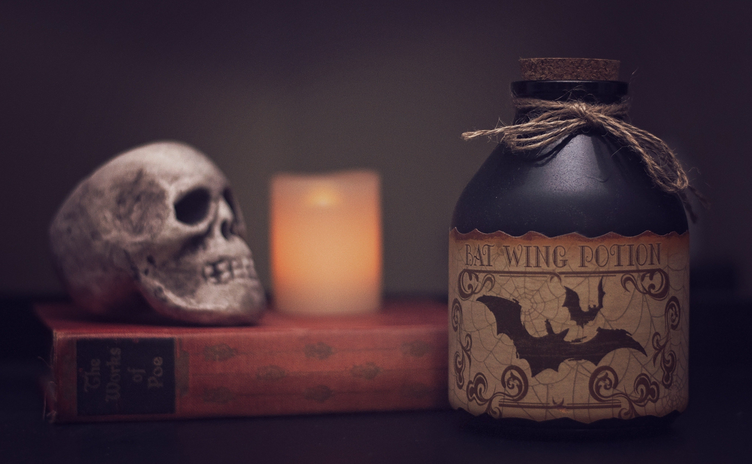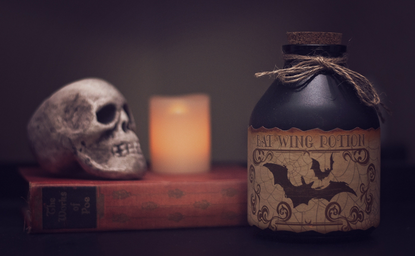Coffins, blood, sparkles, seduction, and the fear of sunlight – what do all of these remind us of? Vampires. We all know what makes a vampire, thanks to over a century of them being depicted in literature and films, but what is their history? When did the vampire make its debut? Why do some sparkle in sunlight while others suffer third-degree burns? If these questions have been creeping up on you from the shadows, then I will be your guide through the history of the vampire.
One of the most famous writers of the 19th century was none other than the gothic queen herself, Mary Shelley – author of “Frankenstein” – who got together with fellow writers Lord Byron and John Polidori one night to share scary stories amongst each other. The story goes that as Lord Byron was sharing his tale of a man on the verge of death, John took inspiration from it and wrote “The Vampyre,” a short story about a man who feasts on the blood of women. This set off other writers to create their own versions of vampires, including the one that is credited as the book to inspire Dracula.
“Carmilla,” written by Sheridan Le Fanu, was the first to take place in a gothic setting and introduce the eroticism around vampires and their bond between their victims. Carmilla has the ability to change her form into various animals, move effortlessly through walls, she sleeps in a coffin, and seduces her victims (all female), which also made it one of the first works of lesbian fiction. She makes herself seem beautiful and gentle, hiding her true nature until it is too late. Bram Stoker took inspiration from the short story and created Dracula, the most famous of vampires.
Everyone, I hope, knows the premise of “Dracula.” It is the most basic of vampire literature, with the preying on young women, turning a victim into a vampire, and the hero discovering how to kill him. It was also the first time that vampires could transform into bats. The first film adaptation of the book was “Nosferatu,” released to audiences in 1922, which depicted the vampire with long fingers, ghoulish-looking, bald, and can die due to exposure in the sun, instead of simply showing discomfort in it like Dracula. “Nosferatu” was the first of many films about vampires, but none were as impactful as the 1931 “Dracula.” Actor Bela Lugosi became the definitive depiction of the vampire thanks to his flowing black cape, widow’s peak, and Hungarian accent. However, the elongated fangs were not shown until Christopher Lee’s performance as the titular character in 1958.
Fast-forward to 1976, author Anne Rice publishes her debut novel “Interview with the Vampire.” The book centers around Louis de Pointe du Lac telling his 200-year life story to a young reporter who is only referred to as “the boy.” In the novel, 1994 film adaptation, and the recent 2022 TV show, Rice’s vampires have their powers based on how old they are, the age of the vampire that turned them, the skills they had as a human, and how much blood they were given to turn. For example, the vampire Armand was able to be in sunlight due to his age of 500 years while also being given the “sky gift” – allowing him to fly. However, all vampires are able to communicate telepathically, but only with those they didn’t turn. They still slept in their coffins, feasted on human or animal blood, had elongated fangs, and were given a pale complexion. One thing that was not expected to become a vampire trait was sparkling in the sun.
In 2005, the first book of the “Twilight” series hit the shelves, an immediate success among young adult readers around the world. Edward Cullen – one of the many vampires of the series – appears as a normal high school student, but is discovered by Bella Swan to be a vampire. She figures this out with some research, noticing his odd behavior, and when he saves her from some predators she ran into. Edward tries to push her away by showing her how dangerous he is, but does this by basically turning into a disco ball in the sunlight. Instead of burning in the sun like previous renditions of vampires, their skin appears to sparkle due to the crystalline cells in their bodies. This new characteristic did not stick like the others.
Now, in the present day, we have the television mockumentary “What We Do in the Shadows.” Based on the 2014 film of the same name, the show portrays the everyday lives of four vampires: Nandor the Relentless, Nadja, Laszlo, and Colin Robinson along with Nandor’s familiar, Guillmero. Nandor, Nadja, and Laszlo have all the classic vampire features including their fangs, sleeping during the day, burning in the sun, drinking blood, speaking with an accent, and turning into bats. Colin Robinson, however, is known as a “day walker.” This is a type of vampire who can be in the sun and feasts on human’s energy instead of blood. It seems as though with all the various versions of the vampire, people are thirsty (ha) for them to go back to the traditional depictions, including myself. Growing up, I thought vampires were cool and wanted to be one. Now, having read classic horror novels that center around vampires, I think I’m good at not having the curse of eternal life.
Happy Halloween to all of my fellow spooky enthusiasts!


